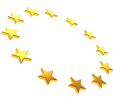The European Commission set out plans to ban imports of Russian gold Friday — but for now it’s leaving jewelry out of the list of sanctioned goods, according to a draft seen by POLITICO.
The EU executive began drafting plans to ban gold from Russia after the G7 economic powers announced last month they would do so in an attempt to stifle income for the Kremlin’s war machine.
“Russia’s brutal war against Ukraine continues unabated,” European Commission President Ursula von der Leyen said in a press release. “Moscow must continue to pay a high price for its aggression.”
The draft of the sanctions package, which still has to be approved by EU countries, says “it shall be prohibited to purchase, import, or transfer, directly or indirectly, gold, as listed in Annex XXVI if it originates in Russia and it has been exported from Russia into the Union or to any third country.”
But the draft annex to the document, obtained by POLITICO, shows that the bloc would only ban gold in powder, unwrought or semi-manufactured forms, as well as gold coins and waste or scrap gold. The draft does not list gold in the form of jewelry like gold chains or gold rings. That could leave loopholes that keep money flowing into Kremlin coffers.
Russia exports gold worth billions of euros each year. In 2019 some 90 percent of Russian gold exports went to the UK — which has now left the EU.
The Commission’s plans go beyond just banning gold.
The proposal is part of a new implementation package that also introduces stricter reporting requirements for asset freezes of sanctioned individuals, and tightens dual-use and advanced-technology export controls. For example, the Commission plans to ban exports to Russia of teargas, fingerprinting ink, police helmets and shields, as well as water cannon that can be used against people, the draft sanctions show.
In an apparent push to counter the Russian narrative that EU’s sanctions contribute to hunger around the world by blocking exports of grain and food, the draft legislation introduces certain exceptions to asset freezes. Countries can allow frozen assets to be used when they’re intended to prevent events that would have a “serious and significant impact on human health and safety or the environment.”
A similar exception applies for the import and transport of agricultural and food products, such as wheat and fertilizers.
Asked whether this meant the EU had previously blocked the flow of fertilizers or grains, an EU diplomat said they believed it was more an “almost cosmetic” step, “just to make sure the entire house is in order.”
“It isn’t the Commission saying we’ve actually done stuff that impedes grain, but it’s making sure that there’s no secondary effects of other sanctions that might in some way create even a hint of administrative burden for the export of grain,” the diplomat said.
According to several diplomats, EU foreign affairs ministers will discuss the plans on Monday. EU ambassadors may then adopt the blueprint during their meetings Wednesday or Friday.
After it took the Commission several weeks to get all countries on board with the last sanctions package — largely owing to Hungary holding up the ban on oil — EU diplomats told POLITICO they expect this round to be adopted without major issues.
This article is part of POLITICO Pro
The one-stop-shop solution for policy professionals fusing the depth of POLITICO journalism with the power of technology
Exclusive, breaking scoops and insights
Customized policy intelligence platform
A high-level public affairs network



